Abstract
"Basic" and "gross" free energy levels are defined for the discrete states of a macromolecular biochemical kinetic system such as a free energy transducing enzyme (e.g., myosin or Na,K-ATPase). Basic free energy level differences are related to the first-order rate constants for transitions between states while gross free energy differences, along with the corresponding fluxes, determine the rate of entropy production in the system. In muscle contraction the analysis is complicated by the possibility of the system doing external mechanical work. The question of the sign of the flux or of the gross free energy level change in a given transition is examined for both single-cycle and multi-cycle models. More definite statements can be made in single-cycle cases. Some numerical examples are included. The more complicated cases are reserved for a subsequent paper.
Full text
PDF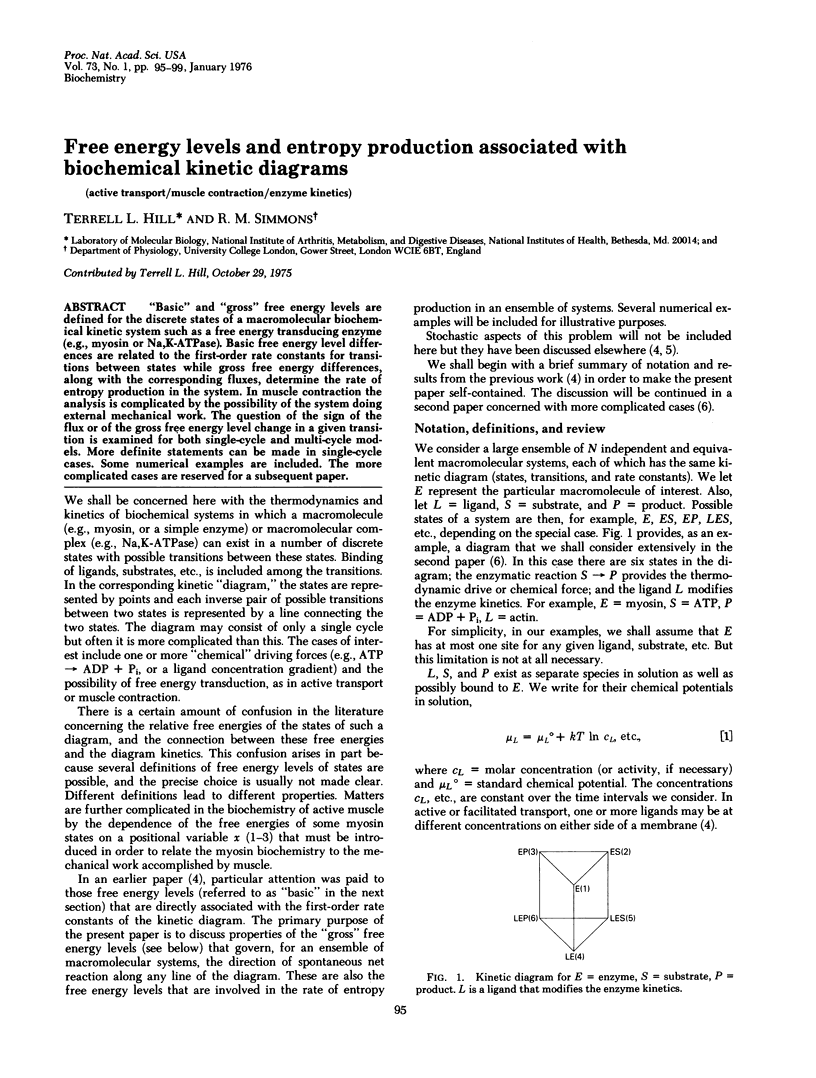
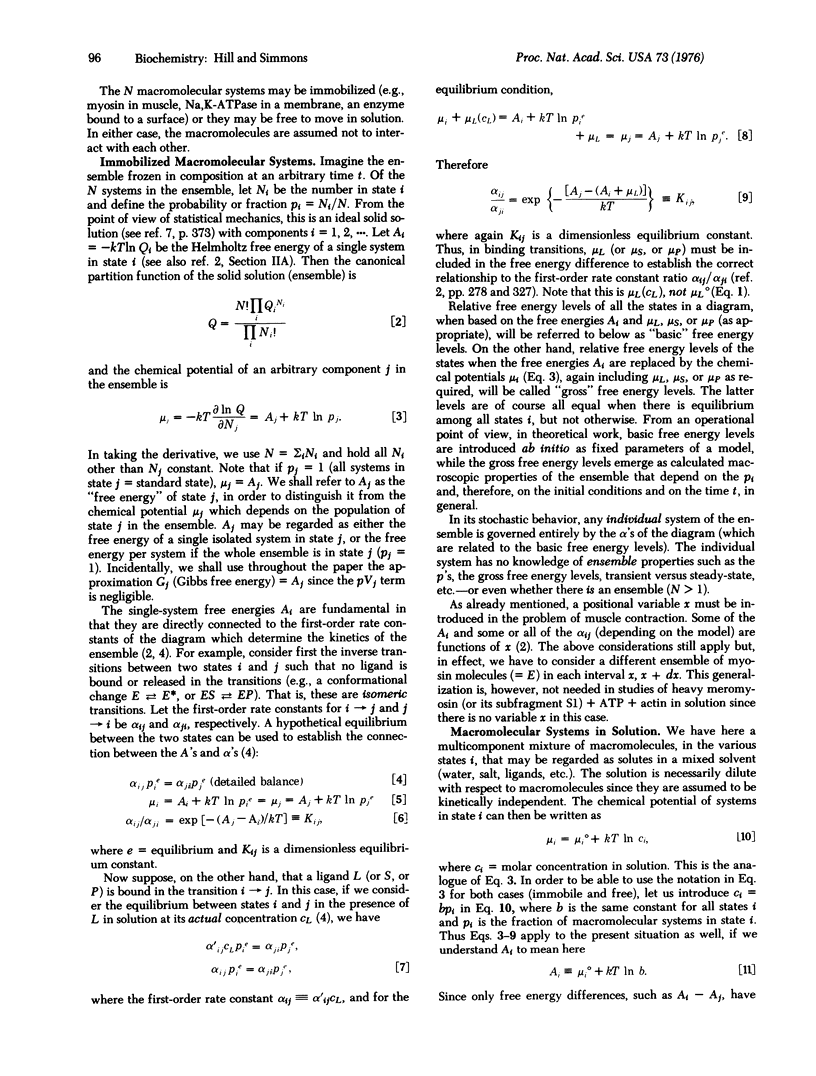
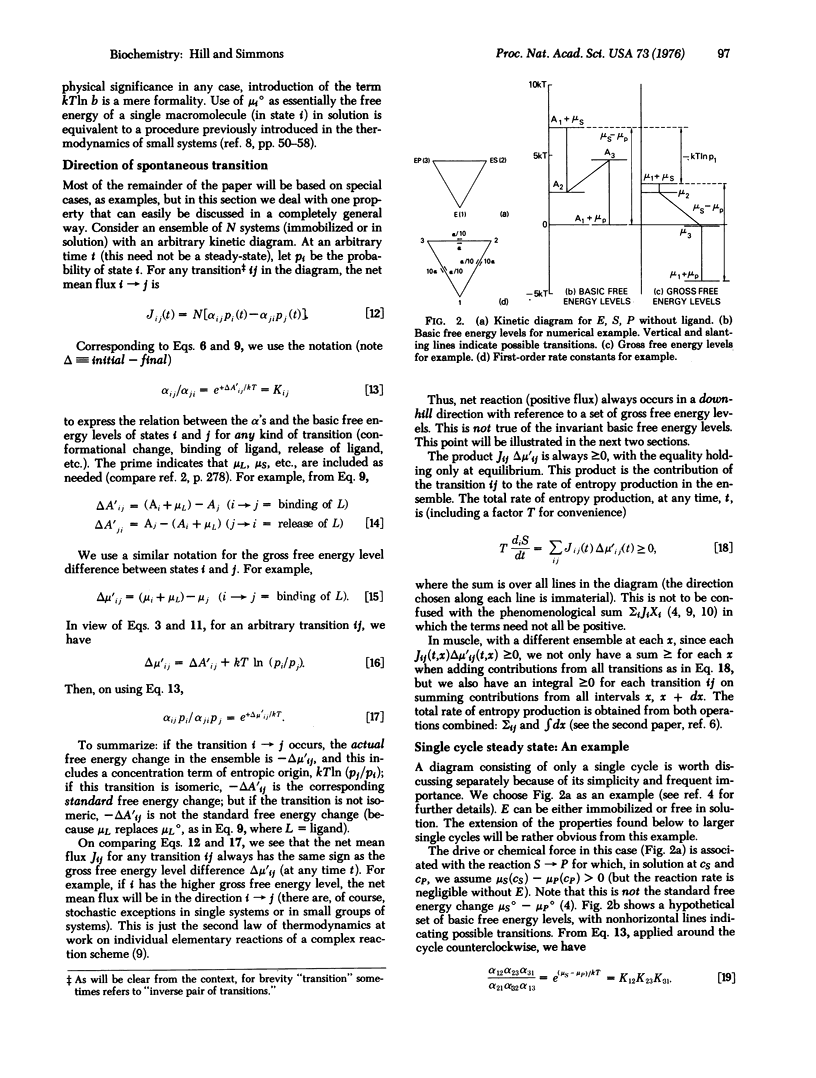
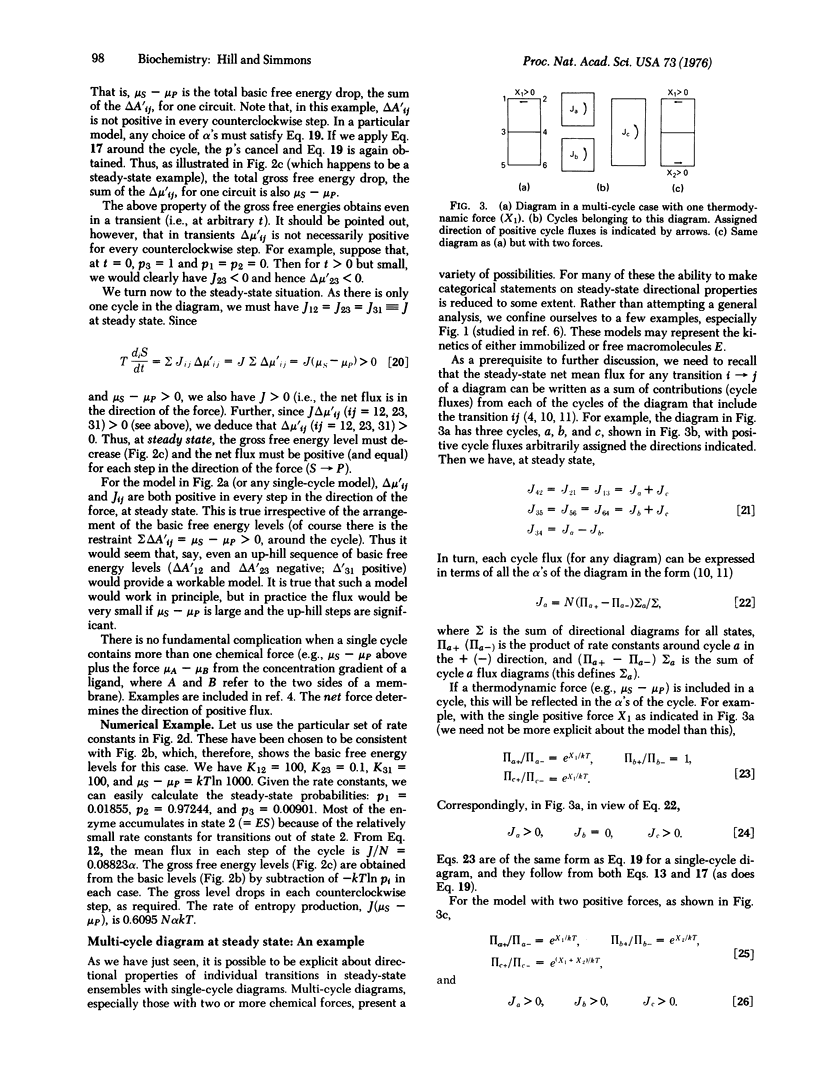
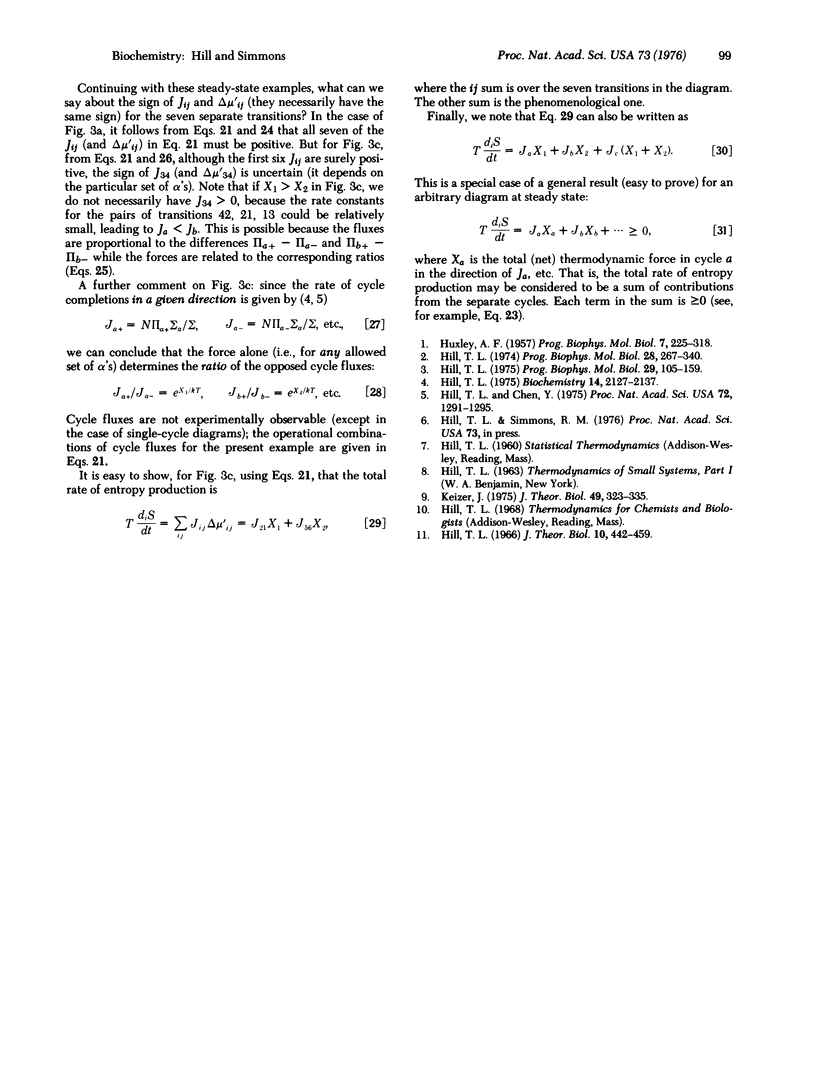
Selected References
These references are in PubMed. This may not be the complete list of references from this article.
- HUXLEY A. F. Muscle structure and theories of contraction. Prog Biophys Biophys Chem. 1957;7:255–318. [PubMed] [Google Scholar]
- Hill T. L., Chen Y. D. Stochastics of cycle completions (fluxes) in biochemical kinetic diagrams. Proc Natl Acad Sci U S A. 1975 Apr;72(4):1291–1295. doi: 10.1073/pnas.72.4.1291. [DOI] [PMC free article] [PubMed] [Google Scholar]
- Hill T. L. Free energy and the kinetics of biochemical diagrams, including active transport. Biochemistry. 1975 May 20;14(10):2127–2137. doi: 10.1021/bi00681a014. [DOI] [PubMed] [Google Scholar]
- Hill T. L. Studies in irreversible thermodynamics. IV. Diagrammatic representation of steady state fluxes for unimolecular systems. J Theor Biol. 1966 Apr;10(3):442–459. doi: 10.1016/0022-5193(66)90137-8. [DOI] [PubMed] [Google Scholar]
- Hill T. L. Theoretical formalism for the sliding filament model of contraction of striated muscle. Part I. Prog Biophys Mol Biol. 1974;28:267–340. doi: 10.1016/0079-6107(74)90020-0. [DOI] [PubMed] [Google Scholar]
- Hill T. L. Theoretical formalism for the sliding filament model of contraction of striated muscle. Part II. Prog Biophys Mol Biol. 1975;29(2):105–159. doi: 10.1016/0079-6107(76)90021-3. [DOI] [PubMed] [Google Scholar]
- Keizer J. Thermodynamic coupling in chemical reactions. J Theor Biol. 1975 Feb;49(2):323–335. doi: 10.1016/0022-5193(75)90175-7. [DOI] [PubMed] [Google Scholar]


